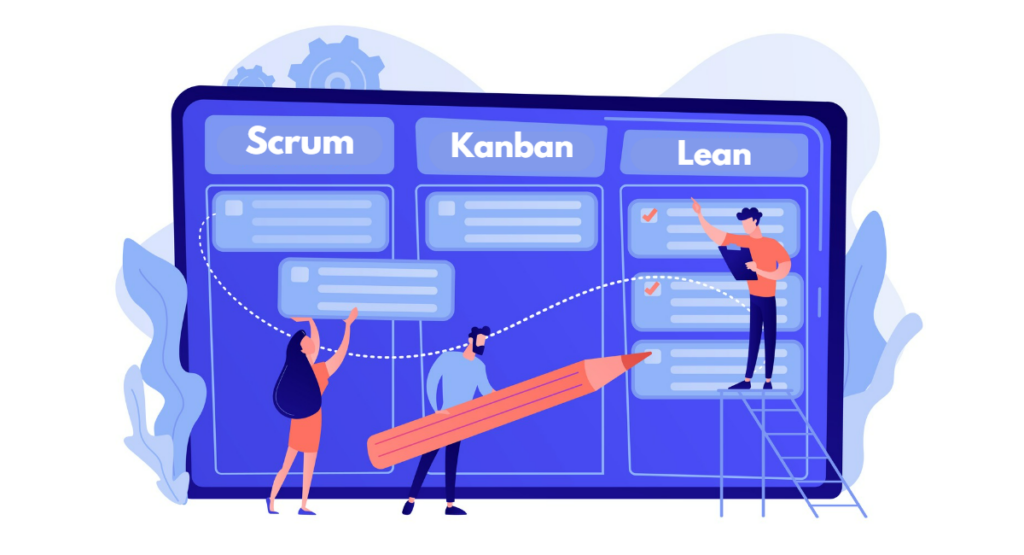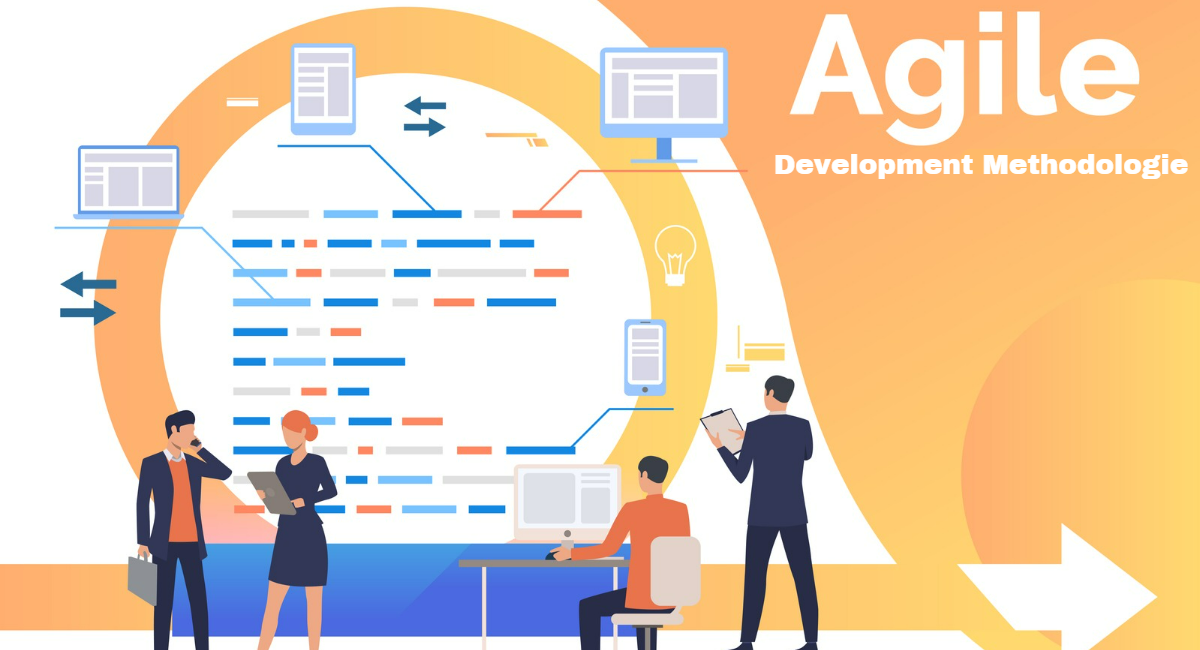Agile methodologies have significantly changed the way software is developed; they allow for much flexibility and an iterative approach in managing most projects.
Unlike most conventional methods, which are usually processed under some kind of linearity, agile methods aid in boosting the reactivity of the team to change, therefore promoting regular improvements in the development of end products.
This guide provides an overview of some of the most frequently used agile methodologies: Scrum, Kanban, and Lean. Each has its unique practices and principles designed to enhance productivity and handle the complexities of modern software development effectively.
Therefore, whether you are new to the entire domain of Agile or simply want to look for a better understanding of the countless benefits that it offers.
You should go through this guide to delve deep into those very important key aspects that will enable you to integrate Agile practices into your tactic for managing projects.
Understanding Agile Development Methodologies

Overview of Agile Development
Agile Development is oxymoronic with software development; emphasizing practices and principles for flexibility, collaboration, and customer feedback, over rigid planning and strict timelines.
Being different from these old, traditional methodologies like Waterfall, it enables a team to adapt fast to new changes in requirements in order to provide the best final product.
The iterative approach is given with the whole reliance process of development that keeps in view the needs and wants of end-users, providing the minimum risk for the market and increased value in the product.
Key Principles of Agile Methodologies
The Agile Manifesto specifies twelve central key principles to frame in place the basis of all the Agile methodologies.
The Agile practice is mainly guided with respect to ensuring clients are satisfied by the delivery of valuable software in early and consistent stages. The Chief Principles Include:
- Accept changing requirements, even late in development.
- Working software is delivered frequently, from a couple of weeks to a couple of months, with a preference for the shorter timescale.
- Business stakeholders and developers work together daily.
- Projects are built around motivated individuals. This means giving them the environment and support they need, trusting them to get the job done.
- Simplicity you know, the art of maximizing the amount of work not done is essential-ended.
Scrum: A Detailed Look

What is Scrum?
Scrum is a very popular framework of Agile development that structures software development around small, cross-functional, and self-managing teams and structured phases called sprints.
These sprints usually last from two to four weeks. The focus of Scrum lies in producing a shippable product at the end of each sprint, whereby any changes are easier to accommodate based on the feedback and evolving requirements.
Scrum is designed to foster better communication, collaboration, and velocity across complex projects, particularly suited to environments in which requirements are likely to be rapidly changing.
Roles and Responsibilities in Scrum
Scrum's roles and responsibilities have three important ones that form the crux of the successful implementation of Scrum.
- Product Owner: He is responsible for ensuring maximum value realization from the developed product in the Development Team's work.
This therefore involves Product Backlog management, letting it be seen and thus transparent and clear to everyone by showing what next the Scrum Team shall work on.
- Scrum Master: He is the facilitator of the event to the Product Owner and the Development Team. The Scrum Master helps everyone understand Scrim theory, practices, rules, and values. Also, the Scrum Master protects the Team from both internal and external distractions.
- Development Team: The group of individuals who get the actual work done to deliver potentially shippable increments of the final product at the end of each Sprint.
It is a self-organizing, cross-functional team responsible for all work necessary to create a working and tested increment of product.
Kanban: Optimizing Workflow
Introduction to Kanban
Kanban is a scheduling system for lean and just-in-time production. So, in a literal sense, Kanban visualizes the flow and tries to understand what may be wrong with that process, what kind of choke points there may be.
To fix them in advance so the work will be allowed to flow expeditiously and in an optimized speed or throughput through the spending process.
It was originally developed in the late 1940s for Toyota automotive in Japan, and has been adopted in software development and other tasks that require continual improvement in process management.
Implementing Kanban Boards
Kanban boards are the most prominent feature of the Kanban method. These boards facilitate visualization of the workflow. A basic Kanban board has three columns: To Do, In Progress, and Done.
However, depending on a team's complexity of workflow, the board can include more tailored columns. In implementing a Kanban board:
- Define the different stages of your workflow.
- Use a physical or digital board with columns representing each stage of the process.
- Place cards in columns that describe each task or feature.
- Move the cards as the task progresses through the stages.
Lean Development: Streamlining Processes
Core Concepts of Lean Development
Lean Development is based on the principles of lean manufacturing, focusing on the elimination of wastes by means of continuous improvement and optimization of practices.
Some of the core principles of Lean include delivering value from the customers' perspective, eliminating waste (or 'Muda'), optimizing the whole system and not just its parts, and continuing to improve constantly.
Such principles help teams deliver software quickly and at good quality.
Reducing Waste in Supersoftware software Development
In software development, waste can manifest in various forms: excess code, waiting time for decisions, unnecessary features, duplicated efforts, and prolonged defect fixing. Here are strategies to reduce waste:
- Clarify Requirements: Avoid developing features that are not required by working closely with the customer to understand their needs.
- Enhance Communication: Use tools that enhance information sharing among team members to reduce miscommunications and delays.
- Continuous Feedback: Integrate testing and feedback at every stage of the software development to ensure that any deviations are immediately caught and rectified.
- Streamline Processes: Regularly review and tweak development processes to eliminate unnecessary steps or tasks that add no value to the development efforts.
By implementing such principles and tactics, teams can focus more on creating value, leading to more successful and timely projects.
Agile Practices for Success
Continuous Integration
Continuous Integration is one of the critical practices in Agile development; hence, it has an approach to practice whereby all code changes are automatically tested and integrated into a shared repository many times a day.
It helps in finding out the integration issue and fixing them in their early state to easily deliver a more stable product.
By integrating work often, the risks of conflicts go down, and the software stays releasable at any time during its development.
Test-Driven Development
Test-Driven Development (TDD) prescribes a development process where tests are to be put down ahead of the actual code.
The underlying principal cycle of TDD in writing a test is to run the test and see it fail, because no code is put in place to pass it; one then moves on to writing the least amount of code to pass the test.
Through this practice, one stresses the specification and not just testing the final product in quality and robustness.
Pair Programming
The concept of pair programming refers to two programmers working together at one workstation: one writes the code as the other reads through each line of code as it is being written.
The roles are frequently switched. This collaboration enhances code quality, reduces bugs, and improves team knowledge sharing. It is especially beneficial for tackling complex problems and training less experienced developers.
Comparison of Agile Methodologies

Contrasting Scrum, Kanban, and Lean
While both Scrum and Lean, alongside Kanban, are all particular pieces of the Agile approach, they do contrast in their structural orientations and orientations in doing things.
Scrum is structured around fixed-length iterations, referred to as "sprints," normally two weeks long, with defined roles and ceremonies.
Kanban is less structured, focusing on making small but continuous changes and pulling work as capacity permits. The emphasis should be on flowing work, thus reducing the time it takes to go from one end to the other in a project.
Lean software development has its roots in lean manufacturing perspectives, which try to maximize value addition by removing waste and streamlining the process.
Choosing the Right Approach for Your Project
Selecting the right Agile methodology depends on the project’s nature and team dynamics. Scrum is suitable for projects requiring frequent feedback from the client and is adaptable to changing project requirements.
Kanban is ideal for projects with varying priorities or those requiring steady throughput in environments where capacity and demand might vary.
Lean is best for projects where efficiency is the key driver. Understanding the strengths and limitations of each will guide teams in choosing the most effective approach to achieve success in their projects.
Agile in Action: Case Studies
Exploring real-world applications of Agile methodologies provides invaluable insights into their practical benefits and challenges. One prominent example is Spotify, which has famously adapted Agile principles to suit its innovative business environment.
Spotify’s model focuses on autonomous "squads" that operate like small startups within the company, each empowered to make swift decisions that align with their specific missions.
This structure supports a dynamic and responsive development environment, encouraging creativity and rapid problem-solving.
Another case study involves IBM, a global tech leader that adopted Agile to overhaul its software development processes.
By implementing Scuffle, an internal version of Scrum, IBM significantly improved its product quality and customer satisfaction rates.
These case studies not only illustrate the versatility of Agile methodologies but also highlight how they can be tailored for different organizational needs and goals.
Tools and Resources for Agile Development
Project Management Software
Effective Agile implementation often relies on robust tools that facilitate project tracking and collaboration. Popular options include:
- Jira - It is a flexible tool that helps teams easily plan, track, and manage agile software development projects.
- Trello - Being known for its intuitive card-and-board system, it is a nice visual means remembering what needs to be done and knowing what remains to be completed.
- Asana - Great in managing tasks and deadlines, Asana also plays nice with a number of communication tools in order to collaboratively work with teams.
These tools are just useful factors that help keep transparency, manage processes clearly, and allow better communication.
Recommended Reading for Agile Enthusists
To deepen understanding and skill in Agile methodologies, several books stand out:
- Agile Manifesto by Agile Alliance: This very foundational document is a must when getting into the roots of Agile, comprising its core tenets and principles.
- Scrum: The Art of Doing Twice the Work in Half the Time by Jeff Sutherland, one of the creators of Scrum. It describes how the process of Scrum goes on and how efficiently it works.
- Lean Software Development: An Agile Toolkit, by Mary and Tom Poppendieck, applies lean manufacturing principles towards software development and gives tools in the direction of productivity improvement and waste reduction.
These links are full of lots of knowledge and hands-on strategies to significantly drive up your development best practices, both for seasoned experts and newcomers to Agile.
Book a Demo and experience ContextQA testing platform in action with a complimentary, no-obligation session tailored to your business needs.
Conclusion
Agile development methods, such as Scrum, Kanban, and Lean, are a few excellent examples of transformational approaches in software project management.
They put a premium on flexibility, continuous enhancement, and rapid response to change an absolute imperative in today's fast-paced technological world.
Through these Agile practices, an organization will be able to boost collaboration, align processes, and finally deliver the best possible quality of products intended to meet the user's needs.
These methodologies provide an immense competitive edge and net productive and innovative environments.
Also, with any major change in the methodologies towards Agile, one needs to keep in mind the training and a change in thought processes, but many times the value of such an evolution will many times result in benefits worth the initial difficulties.
Remember the organizational context and needs to take the right methodology that will put you off on the right foot in your path to Agile mastery.
Also Read - How to Download, Install and Update Xcode on Mac
